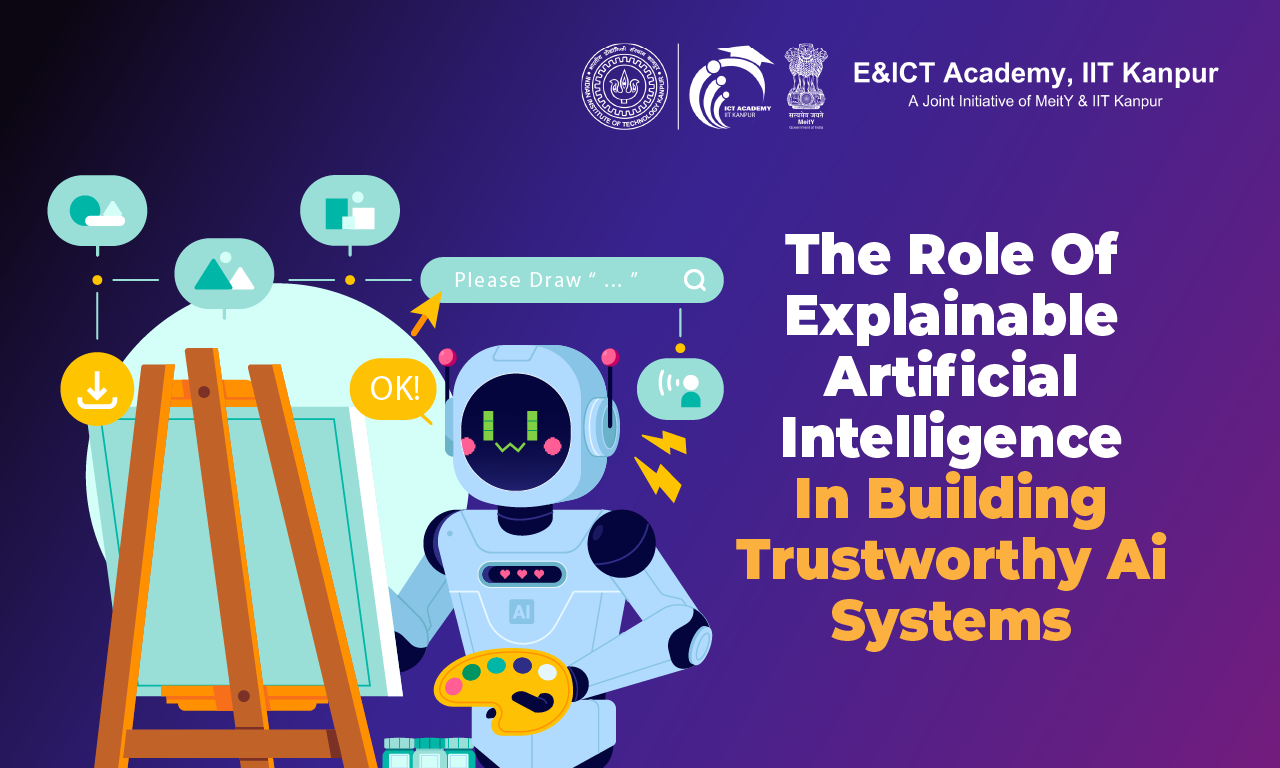The Role of Explainable Artificial Intelligence (XAI) in Building Trustworthy AI Systems

Since its recent substantial advancements, artificial intelligence (AI) is currently being incorporated into an increasing number of facets of daily life. Concerns regarding AI systems’ transparency, accountability, and ethical implications have increased as they become more complex and influential.
A critical approach to allay these concerns and promote confidence in AI systems is the idea of Explainable AI (XAI). Let’s explore Explainable AI’s multifaceted role in creating and implementing reliable AI systems while emphasizing its importance in improving interpretability.
What is Explainable Artificial Intelligence (XAI)?
A collection of methods, tactics, and strategies known as Explainable Artificial Intelligence (XAI) aims to make artificial intelligence (AI) systems’ decision-making processes transparent and understandable to human users.
In other words, XAI aims to explain the outcomes and forecasts produced by AI models, especially those that use sophisticated algorithms like deep learning and neural networks. Organizations need to build trust and confidence when using different AI systems; therefore, explainable artificial intelligence plays a vital role.
Why is Explainable Artificial Intelligence (XAI) Important?
For any organization to understand how its models work, it is imperative to understand AI’s decision-making processes. All this is possible with the help of explainable artificial intelligence, as it can help people understand ML algorithms, neural networks, and deep learning principles.
More often, the most challenging thing to interpret is the ML models or the black boxes.
Similarly, deep learning neural networks are also quite complex for an individual to comprehend. Besides, there is always a risk of an AI model not producing accurate results since its production data can differ from the training data.
Therefore, it is critical for organizations to constantly monitor their models to promote AI’s explainability and measure the impact on the business because of using such algorithms. Hence, explainable AI helps build trust and model authenticity. It further helps mitigate legal, compliance, reputational, and security risks related to AI production. Hence, it is not wrong to say that explainable AI is crucial for implementing responsible artificial intelligence with fairness, accountability, and model explainability in organizations.
How does Explainable Artificial Intelligence Operate?
Companies need more explainable artificial intelligence to understand their AI models and make necessary adjustments. Explainable AI can also help enhance the customer experience for a particular service or product as it can ensure your end user will trust the decisions made by your AI system.
Let’s look at the different techniques through which explainable artificial intelligence operates on:
- Prediction Accuracy
- Traceability
- Decision Understanding
- Regulatory Compliance
There is nothing more important than the accuracy of the AI models. So, how does it ensure accuracy? Continuously comparing and running stimulated XAI outputs with the training data set results to determine the prediction accuracy. LIME, or the local interpretable model-agnostic explanations, is the most common technique used for this purpose.
Traceability is yet an essential element to accomplish explainable artificial intelligence. You can do it by limiting the ways of decision-making and narrowing the ML scope and its features. DeepLIFT – deep learning important features- an example of a traceability technique used in explainable artificial intelligence. It compares each neuron’s activation with its reference neuron and then shows a traceable link and dependencies between the two neurons.
Today people do not trust the decisions made by any artificial intelligence system, so they need to start trusting the system if they want to work with it. Consequently, educating and training the people working on AI to understand how artificial intelligence makes its decision is essential.
Regulations requiring accountability and transparency in decision-making processes apply to many industries and sectors. By explaining their activities clearly, XAI aids AI systems in adhering to these rules.
What are the Benefits of Implementing Explainable Artificial Intelligence?
Here are some of the advantages of implementing explainable AI for any organization. These are not limited to the ones mentioned below, but they are the most important:
- Trust and Confidence
- Enhanced Speed Time for Artificial Intelligence Results
- Model Governance Risk and Cost Mitigation
Your organization needs explainable artificial intelligence to build trust in producing artificial intelligence systems. By rapidly bringing your artificial intelligence models to production, your company ensures the easy interpretability and explainability of those models.
Explainable artificial intelligence can help companies systematically manage and monitor their AI models to optimize business outcomes further. It can additionally help continuously improve and evaluate the AI model’s performance. Thus, it supports any changes required for the system’s overall development.
Through explainable artificial intelligence in place, companies can keep their AI models transparent and explainable. It can further help to manage compliance, risk, and other regulatory requirements. It can even minimize the need for manual inspections that can lead to costly errors.
Examples of Use Cases of Explainable Artificial Intelligence
Everything shines from the outside, but how effective it is depends after using it. So, if you are wondering whether explainable artificial intelligence will be of any importance, below are a few industries where you can find the use of explainable artificial intelligence:
- Healthcare
- Financial Sector
- Autonomous Vehicles
Explainable AI can help accelerate diagnosis, image analysis, medical diagnosis, and resource optimization. Thus, it can enhance transparency and traceability in decision-making for patients. It is a good way of building trust between a doctor and their patient as the former can understand how the AI has reached that diagnosis.
Explainable artificial intelligence plays a vital role in detecting fraud in the financial sector. Approval or rejecting financial options such as loans or mortgages is also essential.
Explainable artificial intelligence is used to explain driving-based decisions in autonomous vehicles or self-driving cars. It is done to ensure passengers understand the decisions taken by the AI model while the car is driven. Passengers need to trust those decisions, especially since security is at stake.
Conclusion
Explainable Artificial Intelligence (XAI) is a leader in building reliable AI systems and is a shining example of accountability and transparency. Clarity and transparency are critical as companies manage the intricate interactions between modern technology and human society.
Along with demystifying the underlying workings of AI algorithms, XAI also promotes human-machine collaboration, reduces bias, and gives users the confidence to employ AI in various fields successfully.
Reference
Recommended Courses

Advanced Certificate Program in AI for Leaders

AI & Digital Transformation

AI for Managers

AI Manager Program

Artificial Intelligence

Deep Learning with Generative AI for Computer Vision

Generative AI

Generative AI – 2-Day Offline Workshop

Machine Learning with Python

Professional Certificate Course in Generative AI and Machine Learning

Professional Certificate Program in Leadership with AI



